Genre: RPG Developer: Sega of Japan Publisher: Sega of Japan Players: 1 Released: 1987
If you’re from Europe or the US, chances are you never heard of The Black Onyx. For Japanese gamers of a certain age though, this game is of historic significance. We Westerners may be more familiar with its lead designer, Henk Rogers, who is not Japanese but was at the time an expatriate from the Netherlands. He’s better known these days as the guy who managed to broker Nintendo’s deal for the exclusive console rights to Tetris, and who is currently running the Tetris company. But in the Japanese gaming landscape, The Black Onyx itself is more significant. When it first arrived in January 1984 for PC-8801 computers, it was one of the earliest computer role-playing games (CRPG) ever released in Japan. There were a handful of others, but according to some sources it became the first RPG to become a commercial hit in Japan, selling a very respectable 150,000 copies in a fledgling market. If such claims are to be believed, it would mean that its success in particular basically paved the way for many later games that would come to define the JRPG as a class of its own. The Legend of Zelda, Dragon Warrior, even Dragon Slayer or Hydlide – they all came after this one. But they were already well-established by the time The Black Onyx was eventually ported to the SG-1000, as one of the last games Sega’s first console would ever receive. It was also never released outside of Japan, regardless of platform. Thanks to the modern power of the Internet though, this historic artifact eventually received an English translation patch by fans.
Considering its place in the timeline of JRPGs, it’s kind of remarkable that The Black Onyx, at first glance, bears little resemblance to the aforementioned games. It does, however, owe a lot to the popular CRPGs of the U.S. at the time. As Henk Rogers later said in an interview with Edge magazine, his idea for The Black Onyx came when he saw that there were no real RPGs available in Japan for either tabletop play or computer formats. So, he decided to create his own. What he came up with was The Black Onyx, A simple first-person dungeon crawler very reminiscent of Wizardry: Proving Grounds of the Mad Overlord to such a degree that you might call it a quick knock-off, with a presentation more geared towards Japanese tastes.
Even compared to that classic (originally released in 1981), The Black Onyx still seems very bare. The story is very basic. The town of Utsuro is cursed by eternal nightfall. In order to lift the curse, a party has to venture down into the dungeons and obtain the Black Onyx. Typical of an early RPG with its roots in the West, you can create a party of up to five characters, but you only have one character class, Fighter. There are no mages, rogues, or thieves with respective special skills (or any other classes or skills, for that matter); no playable races; no ranged weapons; no magic system; and no items, except weapons and armor. What it does have is first-person dungeon exploring reminiscent of Wizardry or the dungeon segments of the first Phantasy Star title. There’s combat, both in fixed locations and as random encounters, but even that is stripped to bare basics, as there are just three options: “fight,” “talk,” or “run.” You can’t even choose to parry or defend during active combat, and there’s no healing or curing yourself of status ailments either. Talking can only be done to random fighters roaming the dungeon halls and results in three more options: “Join Us,” “Goodbye,” and, oddly enough, “Your money or your life.” More on those in a bit.
Party creation, at least on the SG-1000, basically consists of picking one out of five almost identical-looking fighters (except for the color of their shirt), without knowing what their stats are, and naming them. You can either fill all available slots or start with any lower number of characters if you want. Starting the game greets you with the message “Prepare to Die!!” which, in your first few attempts, you definitely will – a lot. Empty slots in your party can be filled later on by either heading back to the starting place and adding freshly created level one characters there, or by randomly running into individual fighters on your way through the dungeon, talking to them and then selecting the “join us” option. These warriors usually bring their own equipment and level as well, so you can use them in combat straight away. This is something you are pretty likely to do, since there is no way to resurrect fallen party members; If they die, they’re gone. In an interesting touch.
The Black Onyx not only tallies equipment but also gold, individually. Some enemies can actually steal money from you, so you should try and find the starting dungeon level’s bank and stash your loot there every time you return from your latest excursion from the dungeon. Healing can also only be done at the starting level in the corresponding “surgery” location. Some shops on the first level also sell weapons and assorted armories, though “tailor” (for getting armor) and “helms” are separate stores.
Your characters don’t have a stealing skill, so they can’t steal themselves. They can mug people though. When you encounter an NPC that you can actually talk to, you can extort money from them by going with the “Your money or your life” dialog option. This is worth a chuckle but not really recommended, as you’re much more likely to be attacked outright in your next encounters with human NPCs. (Incidentally, the final dialog option, “goodbye,” is just that: leaving the other character with no consequences whatsoever).
What seems to be the first level of the dungeon is actually the starting town, which you traverse just like every other stage, and it basically looks the same as well. Aside from the doors that lead to the aforementioned shops and services, there are also inns and pubs, as well as a jail. There is little to be actually done there, though. NPCs may utter a single dialogue line, but that’s of no further consequence. Hanging out in the cemetery area gives you the opportunity for a few early battles before entering the dungeon proper. There’s also a well that leads directly to a fight with a kraken, which will wipe the floor with you if you engage with too weak levels and equipment. Later on, this serves as a shortcut to dungeon level five, which is a godsend when there’s no magic allowing for an immediate dungeon exit.
How you fare in combat is, as far as I can tell, entirely based on your equipment. All weapons do more or less a fixed amount of damage within a very narrow margin, and character advancement only really makes itself known by the length of your health bar. Said equipment can either be purchased or gained in fixed combat encounters. As such, the game lays down a template that starts to feel more like the early JRPGs that came right after (specifically Hydlide, Dragon Slayer, or Dragon Warrior). The role-playing experience is reduced to grinding levels and gold by killing monsters, gaining equipment, and leveling up for a longer health bar. That’s also the sole gameplay loop. Head down in the dungeon, explore a bit and kill monsters, then head back to the first level to heal your party and maybe buy better gear – wash, rinse, repeat. What’s lacking, and what was already present in other console RPGs from around 1987, are a more strategic approach to combat, different skills, more diversity when exploring the environments, side quests, or any interesting attempt at world-building. There are also no real puzzles to speak of, save for one tricky sort-of riddle near the end.
One thing the game does well, at least, is the dungeon exploring itself. The dungeons aren’t just squares with walls filled in but irregular mazes – old-school dungeon crawler fans that love drawing out maps on graph paper will feel in heaven. A couple of levels in, the game throws a few navigational obstacles along your way like hidden doors, semi-passable walls that only allow passage in one direction or teleporter traps that transport you to a different part of the level, making mapping out the dungeon a tad more difficult.
But even that experience is hampered by the fact that the environments all basically look the same – featureless halls in pastel colors that occasionally have a door set in the walls and otherwise offer virtually no visually distinctive features, save for the occasional text describing what one should see there. The cemetery looks like the outside of the pub or the bottom of a well. The visuals in general are very one-note. For example, while there are about two dozen different monster types or so, they lack in detail and are completely monocolor. Every single human sprite, regardless of NPC, player character or enemy, looks exactly the same: a marginally fleshed-out stick figure except for different colors for hair and shirts.
One tiny nifty feature this game has to offer does come to mind. You actually see your characters wearing the respective armor, shields, and weapons they have equipped. At least in that regard, it was ahead of the curve (for what that’s worth). Progress can be saved through a password feature, selectable whenever you quit. The patched version I had still used the original Japanese characters, and it’s generally a bit of a chore to use as well.
The Black Onyx is a very barebones, very old-school dungeon crawler, with emphasis on “old.” While it’s neat to see that the characters already have little animations going on and visibly display what equipment they carry – which wasn’t a given for RPGs at the time – this doesn’t help to mask that there is not much to the game. The SG-1000 certainly was no graphical powerhouse, but even with that in mind, the visuals are displeasing and monotonous. The primary color scheme for the dungeon doesn’t serve to create an appropriate atmosphere, least of all for a town supposedly shrouded in everlasting night. And gameplay-wise, The Black Onyx doesn’t have much to offer. It may be interesting for its place in the history of Japanese RPGs, and during its original release it might have awed a gaming populace that up until that point had no idea what a role-playing game was supposed to be. From a modern perspective, however, it feels more like a pilot study of what an RPG could theoretically be than a proper, full-fledged game in that genre. By the time this title was ported to the SG-1000, other console platforms could already offer far superior games in every regard, even in the JRPG subgenre. Standing on its own and viewed through a lens of gaming history, it remains in an awkward place – between a stripped down western Wizardry knockoff on one side, and a clunky eastern proto-JRPG on the other.
Score: 3 out of 10

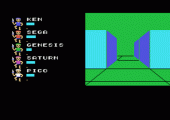
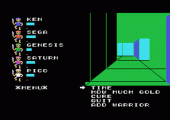
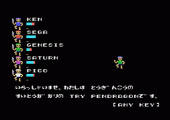
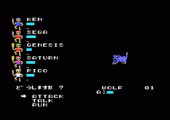
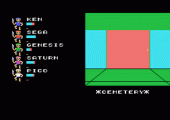
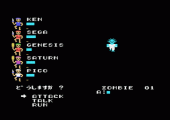
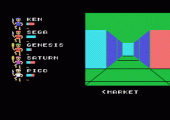
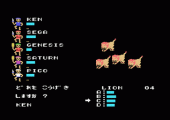
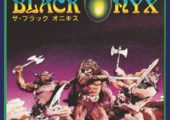
Recent Comments